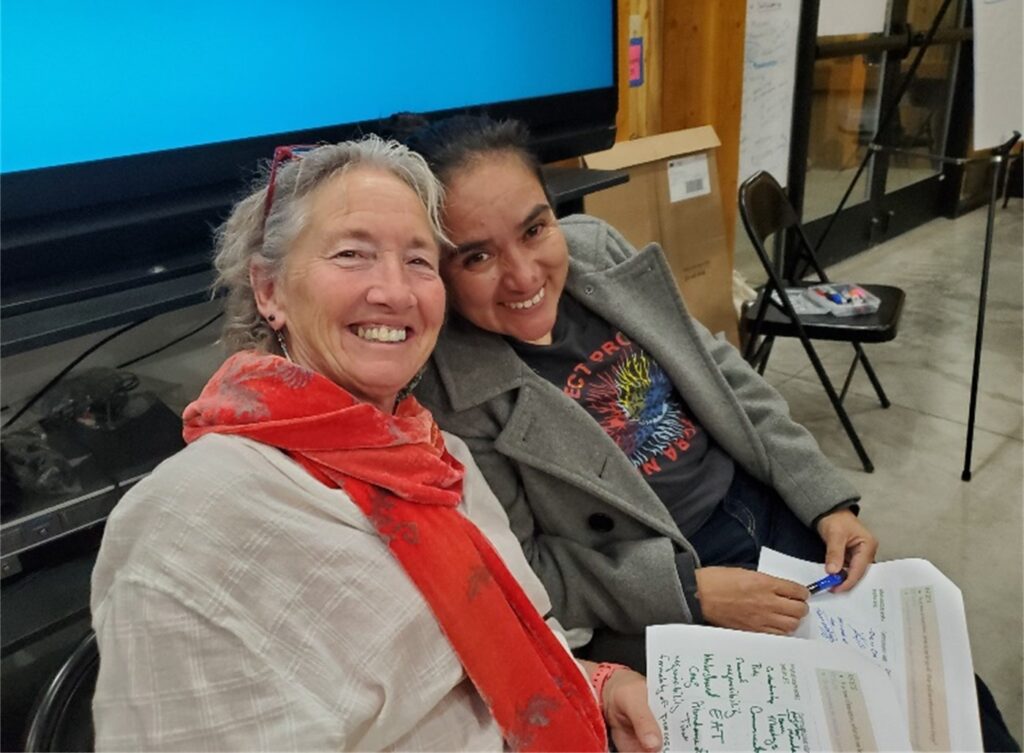From Grassroots Food Movement to Transformative Local Foods System
Liza Marron founded LFC in 2008 to restore the grassroots food movement in the San Luis Valley. Liza says, “People were yearning to recapture a connection that SLV residents have had historically with the seed, the dirt, the farmer, the animal, and the story of where and how their food is grown.“ The coalition set out to foster an equitable local food system that restores the health of the people, community, economy, and ecosystem in the San Luis Valley of Colorado. More than ten years later, LFC manages several projects that support their mission including:
- Local Roots Guide
- Farm 2 School initiatives
- Local Food Local Places
- Mobile Kitchen
- Cooking Matters Program™
- Rio Grande Farm Park
- Valley Roots Farm Hub
By 2019 the LFC was poised to envision the best mission, values, and impacts that promote health equity and inclusion, design the internal structure to meet the needs of the growing organization and build on the organization’s lasting impact and legacy throughout the Valley. The Civic Canopy brought the Community Learning Model as a container for this vision and have partnered with this committed team for the past four years. Going through the Community Learning Model wasn’t linear. At each stage, the Canopy provided tools and resources based on what was needed at the moment.
Inclusion & Dialogue
When we began working with LFC, they already had a strong history of inclusion. The staff and Coalition Board of Directors intentionally show up throughout the San Luis Valley to build relationships with everyone impacted by food systems. To them, this meant, everyone who eats, grows food, purchases food, or produces food products. To create diverse planning teams for new initiatives, the team starts by exploring, “How do we include the voices most impacted by food inequity?”
We worked with them to put this into practice throughout the Six County Food Assessment process. With a population of just over 16,000 residents, the San Luis Valley is nearly the size of New Jersey. This makes it incredibly challenging to get everyone’s voice in the room. The team had food summits in each of the six counties of the San Luis Valley. For each, they did focused outreach to migrant workers, government employees, small farmers, food banks, and more. While some of these folk, like government employees, would be the usual suspects in these kinds of conversations, they made sure to invite those most impacted by food inequity, like migrant workers. Then, LFC made it easier for some of these folks to participate. They valued the precious time each contributed by reimbursement for transportation and their time. Once they made it to the food summit, the Civic Canopy supported the design of an authentic community voice through dialogue on diverse hopes, challenges, and opportunities.
Results
The Canopy then took all this input from community members and worked with the Board of Directors to embed it throughout their strategic plan. A strategic plan lays out a key result the coalition wants to achieve, and the milestones needed to get there. Like many organizations, their overall result is their vision statement: foster an equitable local foods system that restores the health of the people, community, economy, and ecosystem in the San Luis Valley of Colorado. To get there, they broke it into multiple strategies:
- Make the Local Choice the Easy Choice through Education and Access
- Promote Voice and Engagement
- Improve Organizational Operations and Sustainability
The Local Food Coalition started making great progress toward achieving these objectives through task-specific action plans for each of the initiatives. A strategic plan allowed both staff and the Board of Directors to understand the coalition’s roadmap, but there was still a lot of information stored in just one person’s head: the Executive Director, Liza Marron. This led us to support their culture of collaboration as an organization.
Culture of Collaboration
LFC ran into an issue that many organizations do. Knowledge, decision-making, and responsibility were all centralized in the hands of one person, but it was time to reimagine the Executive Director as the LFC founder began running for Saguache County Commissioner. The LFC dived into equity as an organization and created structures that better distribute leadership and decision-making. In the long run, these changes will better support staff and the communities they serve.
The Civic Canopy supported the input of the board and staff to develop a co-director structure with function areas called “Pods.” Pods help develop internal staff skills and distribute both leadership and decision-making to become more inclusive. As they tried out these new structures, the Canopy introduced them to emergent learning tools to help staff reflect on adaptation to the original plans and open doors to more innovative approaches.
What’s Next?
The Civic Canopy continues to partner with the LFC by creating effective collective impact to equitably increase access and affordability of local foods in the San Luis Valley. The coalition has survived the leadership transition and Saguache County has a new Commissioner in a position to change policy, procedures, and practices to improve local food systems! Canopy will continue to support and consult with pods on decision-making and structure. The Community Learning Model has allowed the SLV LFC to spiral into multiple initiatives that grow and engage all residents to plant seeds of local food, local places.


